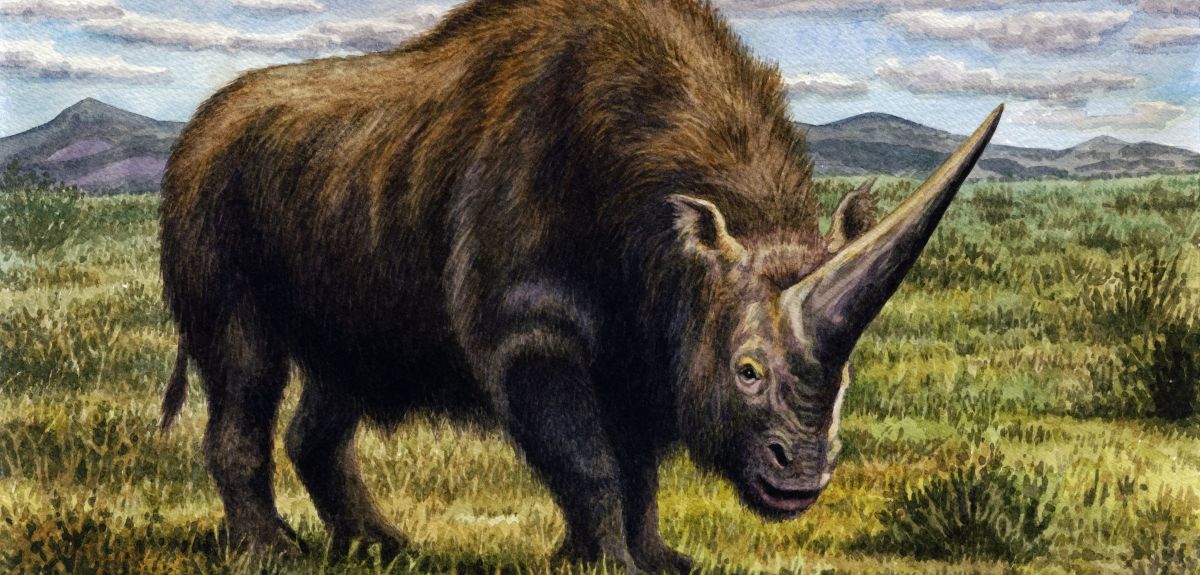
Extinct 'Siberian unicorn' may have lived alongside humans
A species of rhino considered a giant of the Ice Age survived much later than previously thought and likely lived alongside modern humans, according to new research.
Scientists believed that the ancient rhino species Elasmotherium sibiricum, known as the 'Siberian unicorn', due to its extraordinary single horn, went extinct between 200,000 and 100,000 years ago. However, the new study conducted by researchers from the Natural History Museum, in collaboration with peers at universities including Oxford, suggests that it survived until at least 39,000 years ago, overlapping in time with the existence of modern humans.
Today there are just five surviving species of rhino, although in the past there have been as many as 250 species at different times. Weighing up to 3.5 tonnes, Elasmotherium sibiricum was undoubtedly one of the most impressive. It has long been assumed that this fantastic beast went extinct well before the last Ice Age, its disappearance preceding the large-scale megafauna extinction which saw the end of the woolly mammoth, Irish elk and sabre-toothed cat. However, a new study has challenged the date of this creature's demise.
Prof Adrian Lister, Merit Researcher at the Natural History Museum, says, 'This megafaunal extinction event didn't really get going until about 40,000 years ago. So Elasmotherium with its apparent extinction date of 100,000 years ago or more has not been considered as part of that same event. We dated a few specimens - such as the beautiful complete skull we have at the Museum - and to our surprise they came in at less than 40,000 years old.'
Prof Lister worked with researchers from the UK, Netherlands and Russia, to date the 23 specimens examined. The radiocarbon dating results obtained using cutting-edge methodologies, confirmed that this species survived until at least 39,000 years ago, and possibly as late as 35,000 years ago.
Dr Thibaut Devièse MEng, MSc, PhD, MRSC of the Radiocarbon Accelerator Unit at Oxford’s School of Archaeology, said: ‘Some of the samples we studied were very contaminated which made the radiocarbon dating very challenging. For this reason we used a novel method of extracting a single amino acid from the bone’s collagen in order to ensure highly accurate results. This method was developed in Oxford by us.’
From a methodological perspective, this paper illustrates perfectly how sample preparation is a crucial step in the radiocarbon dating process particularly when artefacts have been heavily coated with conservation materials.
Further study has also revealed more about the species' biology and possible behaviour. The researchers studied the stable isotope ratios in the rhino's teeth, which involved looking at the levels of different carbon and nitrogen isotopes and then comparing them to different plants, allowing them to determine what the animals were eating. The results confirm that the ‘Siberian unicorn’ was most likely grazing on tough, dry grasses.
Elasmotherium's final days were shared with early modern humans and Neanderthals. It is, however, unlikely that the presence of humans was the cause of extinction. Instead it is more probable that dramatic fluctuations in climate during this time period, coupled with the specialised grazing lifestyle and the rhinos’ naturally low population numbers, pushed the species to the edge.
Adrian's colleagues in Australia were also able to extract DNA from some of the fossils, the first time any DNA has ever been recovered from E. sibiricum. This has helped to settle a debate about where the Siberian unicorn, along with all other members of the Elastrotherium genus, fit on the rhino evolutionary tree. The ancient group split from the modern group of rhinos roughly 43 million years ago making the Siberian unicorn the last species of a highly distinctive and ancient lineage.
 Cambridge victorious in Women's and Men's Boat Races 2025
Cambridge victorious in Women's and Men's Boat Races 2025
 Expert Comment: Ethical and legal challenges of uterus transplants in Mexico
Expert Comment: Ethical and legal challenges of uterus transplants in Mexico
 Oxford Humanities team delivers framework for tackling modern slavery and human trafficking
Oxford Humanities team delivers framework for tackling modern slavery and human trafficking